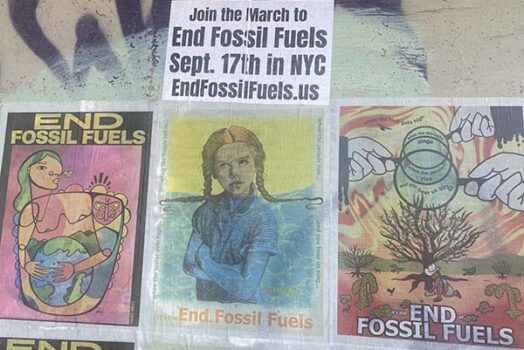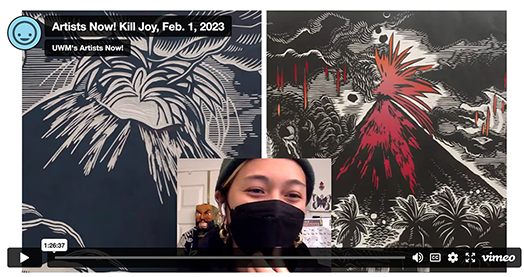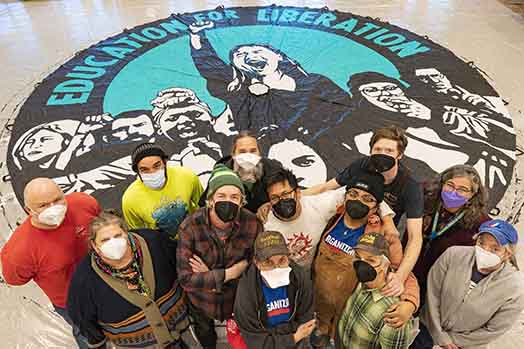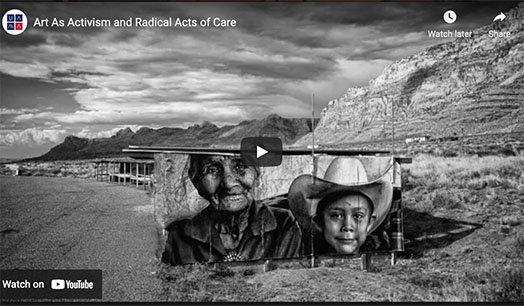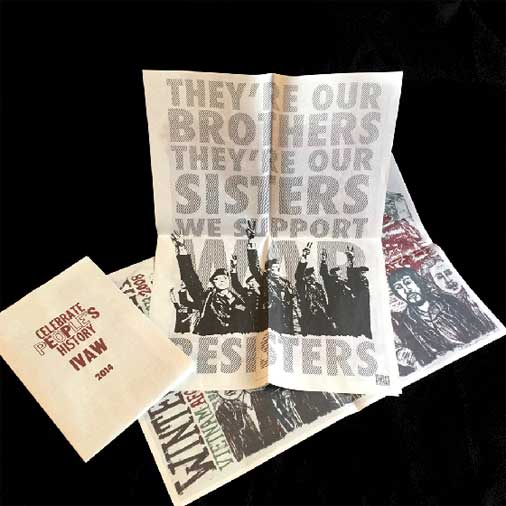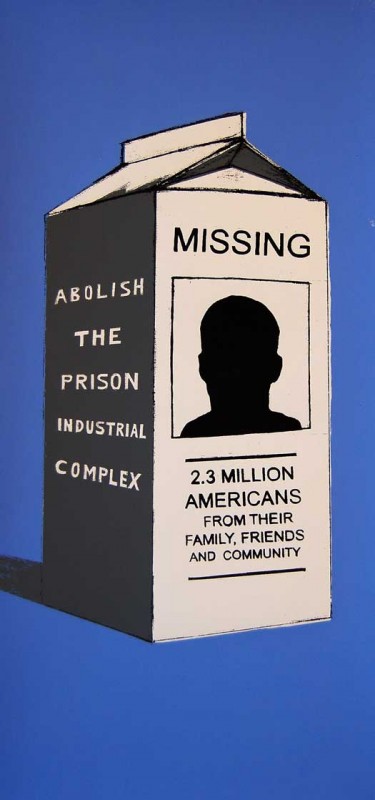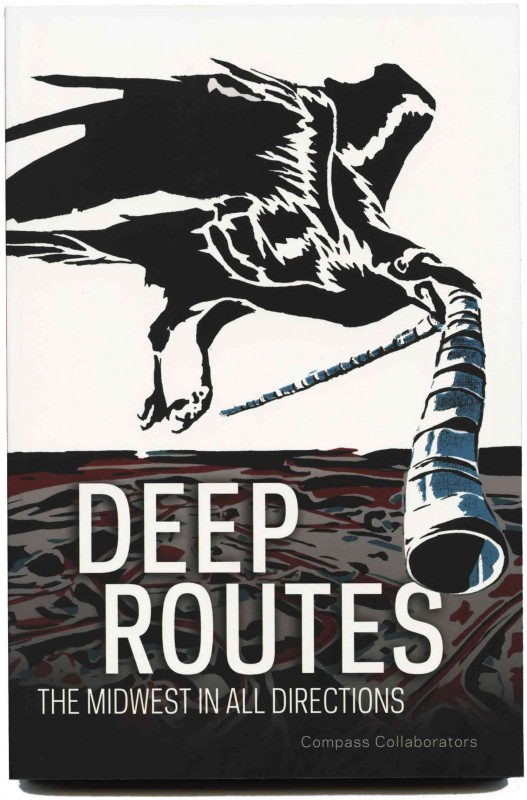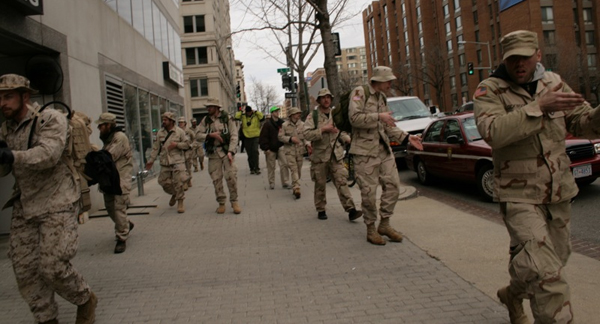
Here is a short excerpt from my book A People’s Art History of the United States and the first installment of blog entries that highlight specific chapters. For this entry I start towards the end of the book: the first half of the second-to-last chapter that focuses on the creative resistance of IVAW (Iraq Veterans Against the War.)
This chapter looks at Operation First Casualty and then segues to the Combat Paper Project. I highlight IVAW first because of the relationship that Justseeds has built up with IVAW over the past five years. For starters, I first learned about the creative resistance of IVAW from a blog post on Justseeds by Josh MacPhee that spurred my interest in their work. I then met IVAW Midwest team leader Aaron Hughes in Chicago through a mutual friend Michael Rakowitz. This led me to me interviewing Aaron for a publication/zine by the art collective Temporary Services called “Temporary Conversations.” It also led to a long series of collaborations between Justseeds and IVAW. First, Justseeds and IVAW did a street art action in Chicago together in 2010. Next, we helped produce a booklet for them through Printed Matter, and then we did a portfolio project (our third portfolio) with IVAW called “War is Trauma.” Since then we have designed street signs and a large-run of silkscreen posters.
To me the Justseeds collaboration with IVAW embodies what the coop does best: it places art directly within movements. And below – the short excerpt from my book – embodies the spirit of IVAW: war resisters and some of the most creative artists and activists working today.
Chapter 28
Bringing the War Home
On March 19, 2007, morning commuters in Washington, DC, witnessed a terrifying scene outside Union Station. More than a dozen U.S. military soldiers rushed upon a crowd and began apprehending civilians. Soldiers yelled:
“Move!”
“Get down on the ground!”
“Get your hands behind your back!”
Eight people were detained. Their hands were tied behind their backs. Some detainees had sandbags put over their heads. Beside them, soldiers crouched, surveying the crowd for sniper fire, holding imaginary M16s in their hands and pointing them at the crowd. Some people in the crowd stood still, some screamed, others ignored them.
The soldiers were members of Iraq Veterans Against the War (IVAW), and they were reenacting their experiences of combat patrols in Iraq and reenacting what it was like to detain Iraqi civilians. They were bringing the war home, using street theatre to get the public to pay attention to what was taking place overseas and what the politicians, pundits, and media rarely discuss: the brutality of war and its effects on Iraqi citizens and U.S. soldiers alike.
Garett Reppenhagen, a former sniper with the 1st Infantry Division, explained why street theatre was needed:
Talking and marching wasn’t getting the point across. We wanted a demonstration that depicted what….we did. The average person could look at that…They can see what we are doing and see that the soldiers are going through a hell of a time and the occupation is really oppressive and violent and brutal on the Iraqi people.”
Reppenhagen helped conceive the action, along with Aaron Hughes and Geoff Millard. The three veterans were frustrated by the cautious approach of antiwar demonstrations, exemplified by the massive protest march that had taken place in Washington, DC, a few months prior. As Hughes said:
All these people had come in from out of town and arrived on a Saturday – a time when representatives aren’t even in Congress. President Bush isn’t there. He’s not in the White House. He’s in Texas, in Crawford. And there’s this huge march. But everyone goes home afterwards. Everyone goes and sleep in there own beds. No one’s willing to sacrifice to deal with the war. So we were pissed off. How do we make people deal with the war? Deal with it in a way where it’s a part of their life.
Reppenhagen and Millard named their action Operation First Casualty (OFC) – the first casualty of war being truth. IVAW sent out a press release but never informed the police of their intentions and never sought a permit or permission. They dressed in full military uniform – minus weapons, flack vests and Kevlar vests. They walked in the same formations they used during combat patrols in Iraq. They held their invisible weapons the same way, employing their memory of months of training and battle experience.
The detainees were friends – peace activists who agreed to act as if they were regular civilians. During the course of the day, thirteen veterans performed mock-patrols in numerous sections of the city.
They did a vehicle search on the National Mall, and patrolled in front of CNN and Fox News (who refused to interview them.) They were briefly detained themselves by police officers on the U.S. Capitol lawn. Hughes recalls:
The cops actually surrounded us and a couple of SUVs pulled up. We were still on the Capital grounds and as soon as we saw that the police were starting to surround us, we immediately got into formation, which is what we practiced the day before.
Hughes continues:
We had a police liaison stand in front of our formation. When the cops came up to us they really did not know what to do. We were more organized than they were. We were more disciplined than they were. All of a sudden they realized that we were not this mob that they could go up to and pull one person aside. They had to deal with us as a community, as a force together.
For IVAW, the action was a way to force the public to recognize the trauma that the soldiers had experienced and to make a political statement against the wars in Iraq and Afghanistan. It re-enforced the primary goals of IVAW: an immediate withdraw of occupying forces from Iraq, adequate care for the physical and psychological health of veterans, and reparations for the human and structural damages that Iraq has suffered from a military occupation.
IVAW had formed in 2004 at the Veterans for Peace (VFP) convention in Boston. By the end of 2006, IVAW had transitioned from a speakers’ bureau, where churches or organizations would call requesting a veteran to speak at an event, to a membership-run organization where chapters would stage their own events and campaigns. By 2009, IVAW had 61 active chapters, including six on military bases, and a membership of over 1,700 veterans and active duty service members across the U.S., Canada, Europe, and Iraq.
Creative resistance is central to IVAW’s tactics. Their actions are decentralized, and arise from the creativity of individual members and chapters. Nothing is mandated from a central leadership. Hughes explains, “There is a real fear with being authoritative within a veteran community when you’re coming from a completely authoritarian structure such as the military.” Their creativity derived from soldiers’ need to heal and the need to speak out. The war had been pitched to the public as “Operation Iraqi Freedom” – a just war where U.S. soldiers would liberate the Iraqi people from a brutal dictator. IVAW argues that, in the process, the U.S. imposed a state of martial law, turned Iraq upside down, and opened it up to allow multinational corporations to come in and reap fortunes.
OFC articulates this critical perspective. It turns the stereotypical image of the soldier on its head. In OFC, the soldier is violent and authoritarian, but also critical, peaceful, and creative. Here, the soldier engages with the public on a direct level, and the soldier becomes the leading voice of dissent – reenacting war to end war.
http://peoplesarthistoryus.org/
http://justseeds.org/nicolas_lampert/03pahbook.html
